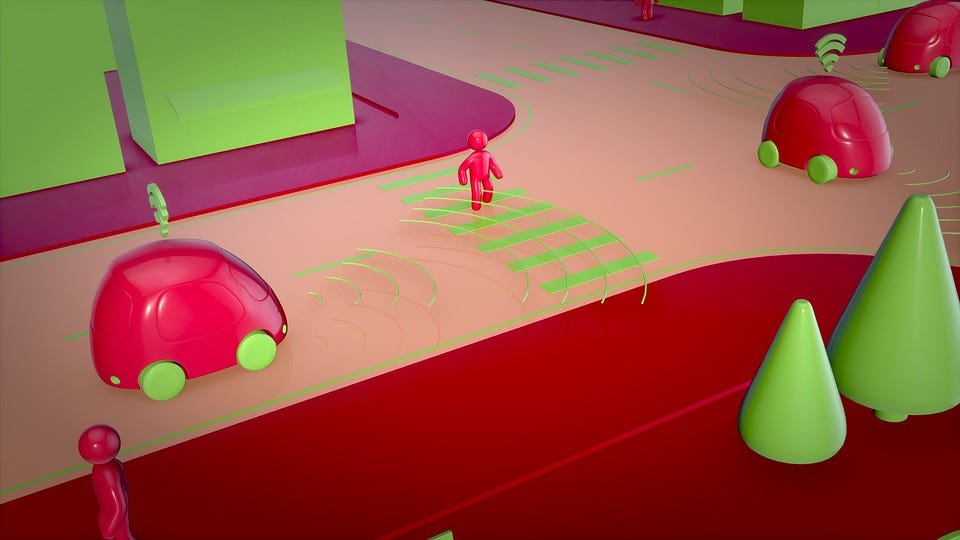My Recent Podcast
My recent podcast was on the science and ethics of gene editing with Dana Carroll, Distinguished Professor at the University of Utah School of Medicine.
New tools like CRISPR are taking gene editing to a whole new level. These tools are powerful enough to create new forms of life, which is completely mind-boggling. This kind of capability makes gene editing technologies a major cause for concern. While there’s excitement about their therapeutic value, my sense is that leaders in the field of genomics are quite aware of its dark side, but hoping that we can somehow avert it.
Dana has written extensively about the science, as well as the societal impacts of gene editing. It was fun talking to him, so check out our conversation.
The Future of the Automobile Industry
My recent trip with a class of NYU’s Tech MBA students to a number of west coast big tech companies, made me think anew about how Artificial Intelligence is poised to disrupt some major industries. The automobile industry stands out as one that’s waiting to happen, which does not bode well for the incumbent auto brands.
But why do disruptions occur in the first place? And why is AI the disruptor this time?
In the business literature, the “Innovator’s Dilemma” is a commonly used example of enterprises that serve current customers well, but underestimate the threat to their business model from emerging technologies that their customers don’t currently value. By the time the market turns, it’s too late. Transistor radios made vacuum tube radios obsolete when people started to prefer listening to music on the move instead of being tethered, despite the loss in sound quality. The basis for competition changed.
Auto brands are heading for disruption because the cars of the future will compete on a different basis than current-day cars.
The car of the present is a wonderful but complex mechanical marvel of fixed and moving parts – which I refer to as “the body” – that has improved steadily over a century. I grew up in the era of clunkers. Cars in the 60s and 70s broke down routinely. But the Japanese automobile transformation of the 1980s changed that. Bad cars disappeared, and the quality differential between the low and high end has shrunk significantly. A ride in a high end Honda isn’t that different from a BMW or a Tesla ride. Unless a new transport mechanism is invented, like levitation, there’s limited upside in a better body. However, brands have been built around better bodies. That’s what we have cared about in the past, the body.
The car of the future will consist of a brain and a body, along with an energy source. The brain will be the most important part. It will be upgradable in terms of hardware and software. The body will become just a commodity.
In business-speak, technological improvements are described in terms of an “S-Curve:” an initial low phase of little improvement is followed by a rapid increase in quality or performance, which eventually flattens out as the technology matures. As the picture shows, bodies are in the late stages of evolution: they become pretty darn good over the years.
While today’s body is topping out along the upper part of the S-curve, the brain is still nascent, waiting to take off from the lower part of the curve. The winner in the auto industry will be the designer of the brain, not the body.
Who is going to come up with the brain? I don’t think it will be an automobile brand. They have focused single-mindedly on what has mattered until now – the body. If the future is about the brain, the winner is more likely to be a chip designer than an automobile brand.
A critical source of advantage at the moment is the data required to improve the brain, as the various Tesla crashes and near-misses have shown. Who has the data? Tesla can, in principle, learn from every car in real time, and distribute the knowledge to its entire fleet. Waymo is similarly data-rich. But both require new kinds of data to learn from that are hard to encounter in regular driving – the “edge cases” – that have not yet occurred. Interestingly, NVIDIA is also data-rich through its “digital twin” technology, where a digital replica of the real world can be created to create the edge cases for learning. It’s similar to game playing programs such as AlphaZero that learn through simulation, by playing repeatedly against themselves.
Who will be dominant in the energy source is hard to predict. It could be an energy company, a materials company, or a biotechnology enterprise that we haven’t even heard of yet. None of the existing auto companies, other than Tesla, has sufficient expertise in this area.
So, what do you do if you’re a brand? Think outside the body.



